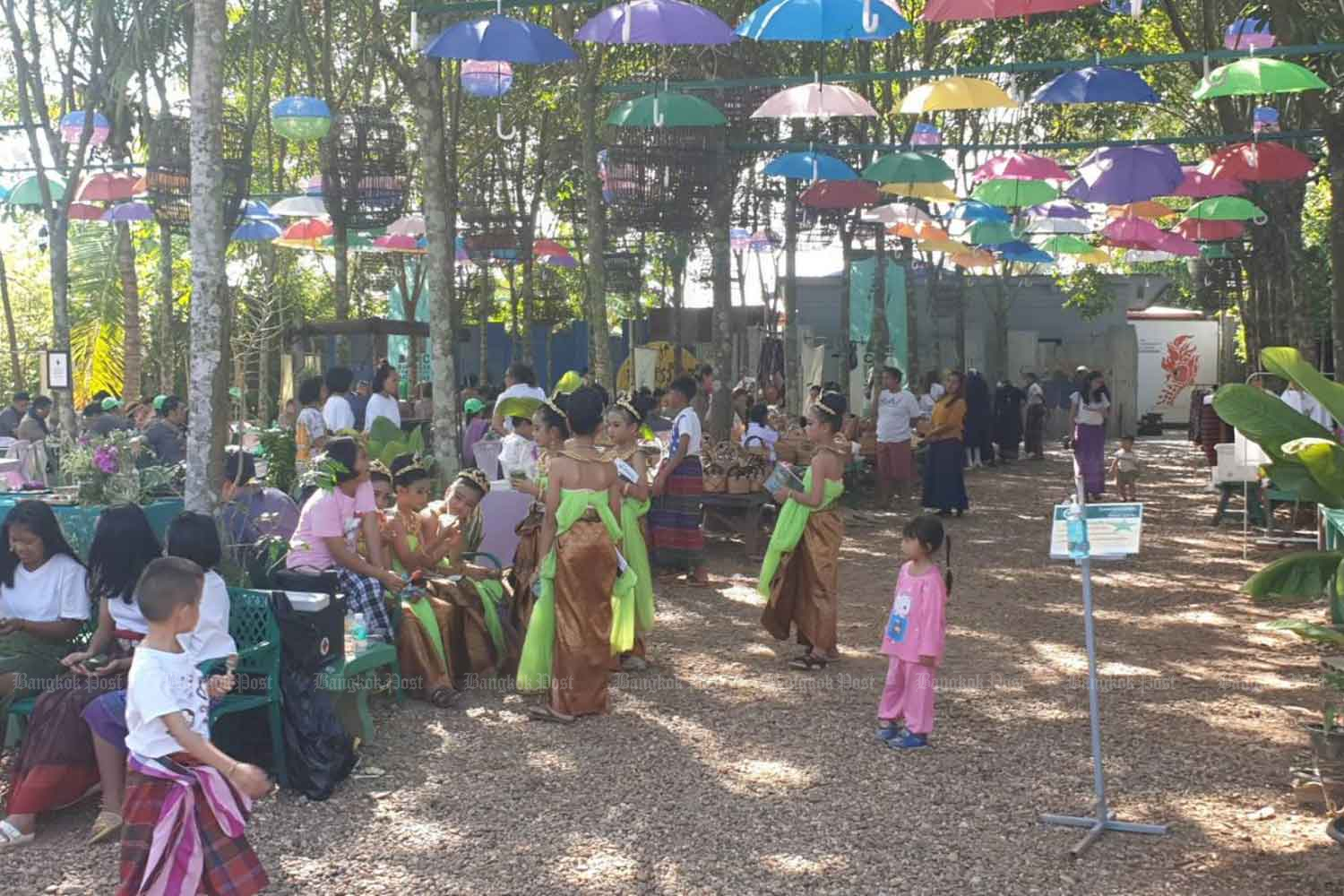
The Ministry of Higher Education, Science, Research and Innovation is being asked to work with the Life Community Museum in Bung Kan province to help promote its educational and learning centre about the life of upper northeastern people and contemporary-traditional arts.
The museum is located on a four-rai plot of land in the Baan Khee Lek Yai community in So Phisai district. It is now starting to become a tourist attraction in this upper northeastern province.
Suthipong Suriya, the founder of the museum, said he established it four years ago as he wanted to preserve his two-storey wooden house that reflected the lives of local people and their art and culture.
The museum is divided into four sections; a leisure area next to the house, the house itself, the newly added modern kitchen and an open rubber forest area which serves as a community market for villagers and hosts cultural events for visitors.
His house is one of 45 in Baan Khee Lek Yai community where locals lead a peaceful and simple existence by preserving their culture and northeastern way of life. People here make a living from rice and rubber farming, textile handicrafts and wickerwork.
Mr Suthipong said his wooden house was 60 years old when he made the decision to transform it. He wanted it to become the centre of the village. That's why he converted it into a museum to develop his village into a tourist attraction, help villagers earn a living and generate a sustainable income for the community as a whole.
He was speaking on behalf of the community to Class XI students on a peace building course from the King Prajadhipok's Institute (KPI) during a visit to the museum to learn about culture and community-based tourism.
Mr Suthipong went on to say that it was no easy task for him to turn his house and Baan Khee Lek Yai into a museum as his village has no natural features or attractions to draw visitors to this area. So he thought when starting out that he should create an identity for the village.
"I started from what I am and what I have. I used my expertise and experience working as a food stylist and designer to help create the concept of the museum and telling its story.
"I combined traditional stories and art in the area with new methods of presentation to add value to the museum and the community," he said.
He said the museum reflected the story of the life of northeastern people and their culture and those who are still here can pass on this legacy to visitors.
Mr Suthipong said travelling to different countries has seen him develop a love for street art such as wall paintings or graffiti.
He said by adapting this in his village he felt he could draw visitors to visit his museum and the community.
He said he sought help from students from several universities such as King Mongkut's Institute of Technology Ladkrabang and Udon Thani Rajabhat University in creating more than 100 examples of street art highlighting local lore and culture within the village.
Because of belief in Nagas in the Mekong River, most of the graffiti and paintings reflect how Nagas are involved with the life of northeastern locals, Mr Suthipong said.
Mr Suthipong wants to see the museum become an educational and learning centre about the life of upper northeastern people and contemporary-traditional art.
"I really want to work with the Ministry of Higher Education, Science, Research and Innovation which oversees the country's universities. The museum could be the perfect place to promote community development through education for all people and it can be a model that other communities can learn from," he said.
Mr Suthipong said that private and business sectors which are undertaking corporate social responsibility (CSR) programmes can also visit his museum so that they can see what it has done for local people such as a community market and promoting career development.
The museum welcomes students to work as trainees to learn about museum management and the presentation of contemporary-traditional art.
Mr Suthipong also wants provincial officials to help support the museum and promote it to become one of the province's major tourist attractions.
He said support could be in the form of developing infrastructure such as maintenance of roads and relandscaping the village to make it more attractive to outsiders.